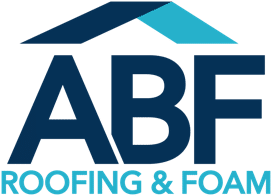We often focus on the visible parts of our homes – the walls, the floors, the roof itself. But what about the hidden spaces? One crucial area that often gets overlooked is the attic. And within that attic, proper ventilation plays a vital role in maintaining a healthy and comfortable home.
At ABF Roofing, we know that a well-ventilated attic is essential for protecting your investment and ensuring your family’s comfort. Let’s delve into why attic ventilation is so important and how it can benefit you.
The Science of Attic Ventilation
Think of your attic as the lungs of your home. Proper ventilation allows for a continuous flow of fresh air, regulating temperature and humidity levels. This airflow is achieved through a balance of intake vents (typically located at the soffit or eaves) and exhaust vents (usually installed near the roof ridge or gables).
Benefits of a Well-Ventilated Attic
-
Increased Energy Efficiency: A well-ventilated attic helps to regulate temperature, reducing the workload on your HVAC system. In the summer, it prevents heat buildup, and in the winter, it helps to prevent ice dams and moisture accumulation. This translates to lower energy bills and a more comfortable living environment.
-
Extended Roof Lifespan: Excessive heat and moisture can wreak havoc on your roof, causing shingles to deteriorate prematurely. Proper ventilation helps to prevent this damage, extending the life of your roof.
-
Improved Indoor Air Quality: A well-ventilated attic helps to prevent the buildup of pollutants, allergens, and moisture, which can contribute to poor indoor air quality and even health problems.
-
Prevents Mold and Mildew Growth: Moisture buildup in the attic can lead to mold and mildew growth, which can damage your home’s structure and pose health risks. Proper ventilation helps to keep the attic dry and prevent these issues.
-
Protects Insulation: Moisture can reduce the effectiveness of insulation. Proper ventilation helps to keep insulation dry, maximizing its performance and energy-saving benefits.
Signs of Poor Attic Ventilation
- Ice Dams in Winter: Ice dams form when melting snow refreezes at the edge of your roof, preventing proper drainage. This can lead to water damage.
- Moisture Buildup: Condensation on the underside of your roof deck or insulation is a sign of excess moisture.
- Mold or Mildew Growth: Visible mold or mildew in your attic indicates a moisture problem.
- High Energy Bills: If your energy bills seem unusually high, poor attic ventilation could be a contributing factor.
What You Can Do
- Ensure Adequate Ventilation: Make sure your attic has a balanced system of intake and exhaust vents.
- Keep Vents Clear: Ensure that vents are not blocked by insulation or other debris.
- Consider Adding Ventilation: If your attic is poorly ventilated, consider adding additional vents or installing a powered attic ventilator.
- Regularly Inspect Your Attic: Check for signs of moisture, mold, or other issues.
ABF Roofing: Your Attic Ventilation Experts
At ABF Roofing, we have extensive experience in assessing and improving attic ventilation. Our team can inspect your attic, identify any ventilation issues, and recommend the best solutions for your home. Contact us today for a free consultation!
By understanding the importance of attic ventilation and taking proactive steps to ensure its effectiveness, you can protect your home, improve energy efficiency, and create a healthier living environment for your family.
